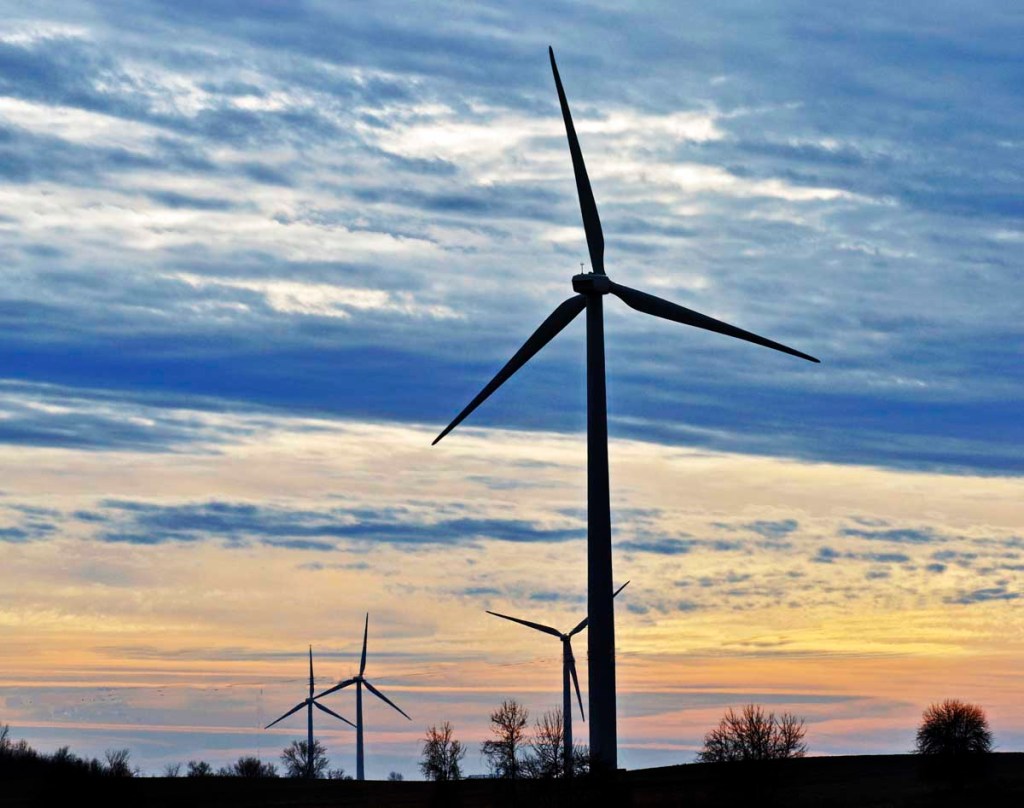Future of Texas wind farms turns on federal tax credit
Published 9:30 pm Thursday, December 3, 2015

- Future of Texas wind farms turns on federal tax credit
AUSTIN – Leon Klement won’t say the answer to all of the country’s energy problems are blowing in the wind, but he’s pretty happy to have about 50 new turbines going up in Cooke County.
Wind energy is already one of the top taxpayers in Cooke County, where about 70 towers have been in place for eight years. They generate cash for individual land owners around the county seat of Gainesville, 65 miles north of Fort Worth.
“Where else can you get paid for the wind blowing over your land?” said Klement, who is a Cooke County commissioner.
The Tyler Bluff wind farm near Muenster, Texas, won’t be a giant, but it will meet the electricity demands for all of Procter and Gamble’s North American fabric and home-care plants. The company is in line to buy 80 percent of the farm’s production.
The wind farm will also cut carbon emissions and add wattage to Texas’ status as the nation’s top wind producer.
Yet, as workers start turning dirt on Tyler Bluff early next year, experts say future projects face a headwind until the status of a key federal tax credit is resolved.
“It’s critical,” said Susan Briner, vice president for corporate communications at EDF Renewable Energy, in San Diego, California, which is building Tyler Bluff.
“We fight year after year to get an extension to continue,” she added, noting that tax subsidies for other energy sectors – including oil and gas – “never go away.”
Jeff Clark, executive director of the Wind Coalition, a trade association of wind-energy developers, manufacturers and customers, agreed that the wind tax credit is plagued by inconsistency.
“One of the challenges we face is the stop-and-start nature of the production tax credit,” he said. “Most incentives are permanently built into the tax code.”
The wind industry began receiving the federal tax credit designed to prompt development of renewable energy in 1992.
Companies that generate electricity from wind are eligible for a credit of 2.3 cents per kilowatt-hour for the first 10 years of a facility’s operation.
But the credit is impermanent and subject to a series of periodic renewals — usually for one or two years at a time. At times, it has been allowed to lapse altogether.
A proposal in the U.S. Senate would extend the credit, now expired, for two more years.
Clark is hopeful the measure will be approved by Congress by year’s end. “It’s a very fluid situation,” he said.
Tyler Bluff won’t be jeopardized since it’s being built under an extension of the tax credit that expired last year. The project qualifies because the developer had already made investments — buying turbine blades — by the deadline, Briner said.
Wind energy’s popularity is catching, not only among producers.
The likes of Microsoft and Wal-Mart this year bought into large-scale, power-purchase deals to save money and meet sustainability goals.
On Thursday, EDF Renewable Energy announced a deal to provide Google all the power from its 201-megawatt Great Western Wind Project in the Oklahoma panhandle.
But Briner said wind doesn’t make sense without tax credits.
The Tyler Bluff project, for example, will generate 411,000 megawatts of electricity annually, Briner said.
At 2.3 cents per kilowatt hour – a megawatt equals 1,000 kilowatts — that’s about $9.45 million in annual production tax credits.
The project will generate $1.3 million a year in taxes and about $372,000 in lease payments, according to the American Wind Energy Association.
The group declined to comment on the legislative fight over the tax credit, but it recently issued a report on the situation.
“The cost of wind energy fell by more than half over the last five years, bringing the wind industry a significant distance down the road to achieving cost parity” with other forms of energy, it reported.
It’s now important, the group argued, to create “policy stability” that levels production costs among energy sectors.
Texas now gets about 10 percent of its power from wind, saving consumers $950 million annually, Clark said.
Its wind farms seem to enjoy support from those who live with them. Landowners can get $10,000 to $12,000 per tower per year from their leases, Clark said.
Out in the West Texas town of La Mesa, the candy-maker Mars Inc. recently put 118 turbines to work at the Mesquite Creek wind farm, which spreads over parts of two counties.
The wind farm sprawls over 25,000 acres.
“It’s the size of Paris,” said Sandra Adams, director of La Mesa’s Chamber of Commerce. “I love all that they are going for the community.”
Such farms can be thousands of miles from the manufacturing sites that they serve, and there may be no direct transmission lines connecting the two.
In an email, Katrin Meincke, a spokeswoman for Procter and Gamble, which will use the Tyler Bluff farm, explained that electricity is transmitted from the wind farms into a grid, from which the company also makes energy purchase.
Meincke said the mechanism is similar to bank accounting.
“Money is continuously deposited and withdrawn across different locations and time periods,” she explained in an email. “These continuous inflows and outflows are managed with detailed accounting systems within the bank. An individual can make withdrawals at any given location or time. Even though the exact same dollar bills are not returned, the ownership is clear.”
Meanwhile, in Cooke County, existing wind towers have become part of the local landscape.
“There are days that they don’t turn,” Klement said. “If you have an abrupt wind change, they’ll all stop turning. They all turn to the new wind direction. Then they’ll all start slowly.
“They make a kind of swooshing noise,” he said. “They are something to see.”
John Austin covers the Texas Statehouse for CNHI’s newspapers and websites. Reach him at jaustin@cnhi.com.

